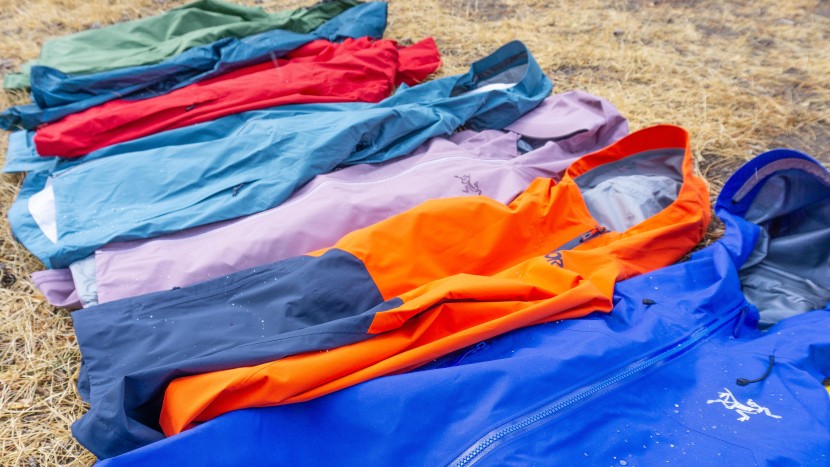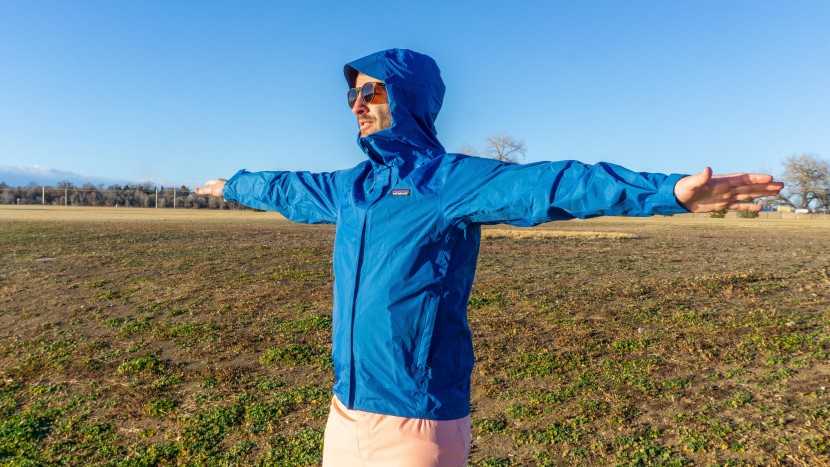Our gear experts live, recreate, and guide in some stormy places, making rain jacket testing a breeze. From the Pacific Northwest to the European Alps, our team pushed each model in our review for weeks of real-world testing. We took these models up glaciated peaks, on rainforest hikes, on ski tours, and backpacked with them in the sleet and rain. We also wore them around town, biking and walking through November farmers markets and drizzly holiday festivals. We also wore each rain jacket in the shower for a series of more objective tests. We've been testing these layers for many years, and our exhaustive approach to testing is what sets us apart from any other review you'll find online.
Testing Metrics
Water Resistance
To test this crucial metric, we conducted extensive field testing, deliberately heading out in stormy weather across a variety of activities, from alpine climbing to hiking. Our gear experts have spent literally hundreds of days utilizing rain jackets and hard shells to ensure thorough examination of water resistance. We also performed a series of standardized shower tests where we stood in a running shower rotating for 15 minutes, subjecting these jackets to the equivalent of a thunderstorm's downpour. We went through a universal series of movements while rotating underneath the showerhead, ensuring each model's body, arms, and hood get soaked. Then, we did it all over again to double-check our findings. We even carried out additional soak tests if any inconsistencies emerge from the field or shower testing.
Breathability
We conducted 45 minutes of moderate physical activity across the same course to assess how well each jacket breathes and vents. We then rated each jacket based on how damp or dry we were. We also noted features that allow the offloading of body heat, such as pit zips and mesh pockets. Lastly, we paid close attention to each option's breathability while conducting our lengthy field tests.
Comfort and Mobility
To examine this metric, we took each jacket on outdoor adventures like climbing, hiking, skiing, and fishing. The jackets with thoughtful features and softer, stretchier, more flexible fabrics typically scored higher. We first score each jacket based on layering, bunching, and coverage, ensuring the hood is included. Then, we scored each model on freedom of movement and overall feel, targeting the suppleness of the fabric itself. For layering, we tried every jacket with a midweight layer underneath. We assess how much extra fabric got in the way for bunching, especially at the chest or waist areas. We also carried out a standardized set of movements to be as objective as possible when assessing range of motion. Finally, we took a detailed look at the hood and its available features, such as toggles, how well we could maintain visibility and peripheral vision after tightening, and whether the hood could move with the head as we moved.
Weight
To test this metric, we weighed each jacket on a scale and used a weight ratings calculator to create a final score ranging from 1 to 10. We also compressed each jacket into its own pocket or hood and compared the overall sizes of each layer.
Construction Quality
While testing, we assessed all seams, zippers, toggles, and the longevity of waterproof membranes and DWR coatings. We took a deep dive into every rain jacket's materials, also researching other owners' long-term experiences and, in our testing, targeted areas known to wear down or break. After our testing period, we note and continually update our findings on the relative durability of each model. We look for wear and tear, stuck zippers, stretched-out elastic, peeling seams, reduced waterproof performance, and any other defects in build quality.






